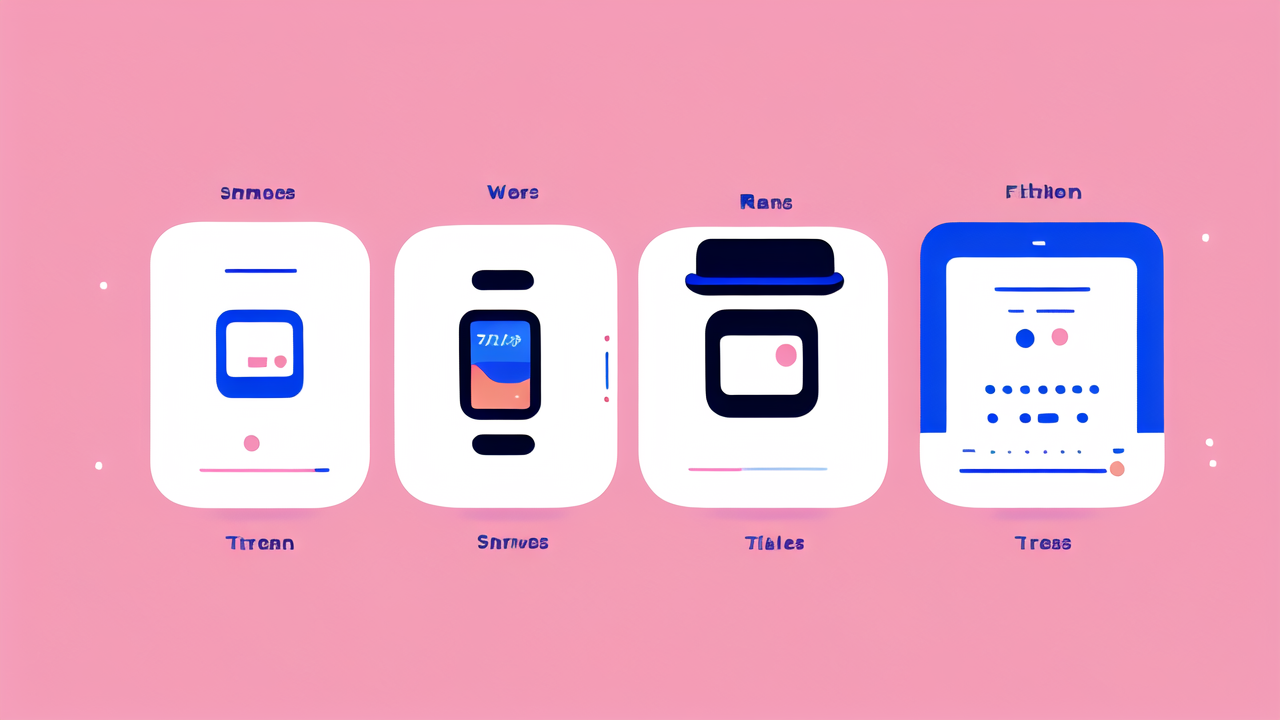Understanding the Wearable Tech Market in the United States
The Rise of Smart Watches and Fitness Trackers
Wearable tech has taken the USA by storm. Smart watches and fitness trackers are now common sights. These devices have become essential for many Americans. They offer convenience and health tracking in one package. The growth of this market has been rapid and impressive. From basic step counters to advanced health monitors, the evolution is clear. Consumers are drawn to the blend of style and function these devices offer. The ease of use and integration with smartphones has boosted their appeal. As technology improves, these wearables become more capable and attractive. The trend shows no signs of slowing down in the near future.

Market Size and User Demographics
The wearable tech market in the USA is booming. It's worth billions and growing fast. Users span all age groups, but some trends stand out. Young adults and fitness enthusiasts are major adopters. Middle-aged professionals use them for health and productivity. Older adults find value in health monitoring features. Men and women show equal interest in wearable tech. Income levels play a role, with higher earners more likely to buy. Urban areas see higher adoption rates than rural regions. The market is expected to grow as prices become more accessible. New features and health benefits continue to attract more users.
Key Players and Innovators in the Wearable Tech Space
Apple leads the pack with its popular Apple Watch. Fitbit remains a strong player in fitness tracking. Garmin excels in sports and outdoor wearables. Samsung offers strong competition in the smartwatch arena. Google's Wear OS powers many third-party devices. Smaller companies like Oura focus on specialized health tracking. Fossil brings fashion-forward designs to smart watches. Whoop targets serious athletes with its subscription model. Xiaomi offers budget-friendly options gaining traction. These players drive innovation and competition in the market. New entrants and startups continue to bring fresh ideas to the field.
Technological Advancements in Wearable Devices
Cutting-Edge Features in Modern Wearables
Today's wearables are packed with advanced features. Heart rate monitoring is now standard in most devices. ECG capabilities are becoming more common in smartwatches. Sleep tracking helps users understand their rest patterns. GPS tracking is essential for runners and outdoor enthusiasts. Water resistance allows for swimming and shower use. Contactless payments add convenience to daily life. Voice assistants bring smart home control to your wrist. Fall detection provides safety for older users. Stress management features help with mental wellbeing. Music control and storage eliminate the need for a separate player. These features make wearables more useful and appealing to a wide audience.
The Integration of AI and Machine Learning
AI and machine learning are revolutionizing wearable tech. These technologies enable more personalized experiences. Devices can learn user habits and preferences over time. AI helps in providing more accurate health insights. Machine learning improves the accuracy of fitness tracking. Predictive analytics can forecast potential health issues. AI-powered assistants become more helpful and context-aware. Smart notifications become more relevant and timely. Gesture recognition allows for more intuitive controls. Language processing enables better voice command responses. As AI advances, wearables become smarter and more proactive in assisting users.
Battery Life and Charging Innovations
Battery life is a key focus in wearable tech development. Manufacturers are working on extending battery duration. New low-power components help conserve energy. Smart power management systems optimize battery use. Some devices now offer week-long battery life. Solar charging is emerging in outdoor-focused wearables. Wireless charging pads make powering up more convenient. Fast charging reduces downtime for users. Some brands explore kinetic charging from body movement. Power-saving modes help extend battery life when needed. Battery health features help users maintain long-term performance. These innovations aim to reduce the hassle of frequent charging.
The Future of Wearable Technology in Health and Wellness
Trends in Fitness and Wearable Technology
Fitness is a major driver in wearable tech adoption. New trends focus on holistic health approaches. Recovery tracking is gaining importance alongside activity monitoring. Virtual coaching through AI is becoming more sophisticated. Social features allow for community challenges and support. Integration with gym equipment enhances workout tracking. Personalized workout recommendations based on user data are improving. Augmented reality workouts are an emerging trend. Stress and mindfulness features complement physical fitness tracking. Nutrition tracking and meal planning are being integrated. These trends show a shift towards more comprehensive health management.
Impact of Wearables on Health Management
Wearables are transforming personal health management. They provide continuous monitoring of vital signs. Users can track long-term health trends easily. Early detection of health issues is becoming possible. Wearables encourage more active lifestyles. They help in managing chronic conditions like diabetes. Mental health support through mood tracking is growing. Sleep quality improvements lead to better overall health. Medication reminders increase treatment adherence. Data sharing with healthcare providers enhances patient care. These devices empower users to take control of their health.
Ethical Considerations and Privacy Concerns
As wearables collect more data, privacy concerns grow. Users worry about who has access to their health information. Data security is a top priority for manufacturers. Transparency in data usage policies is crucial. There are concerns about employer access to employee health data. Insurance companies' use of wearable data raises questions. The potential for data breaches is a significant worry. Balancing innovation with privacy protection is challenging. Ethical use of AI in health predictions is under scrutiny. User control over data sharing is becoming more important. These issues will shape the future development of wearable technology.




Leave a comment
This site is protected by hCaptcha and the hCaptcha Privacy Policy and Terms of Service apply.